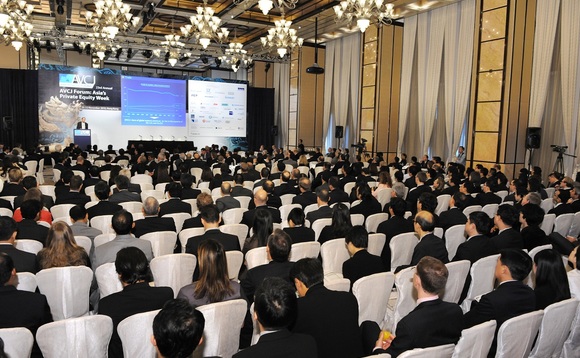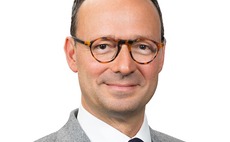
Asia Pacific private equity: out of the tunnel

The G20 Seoul Summit, convened under the heading “G-20’s Role in the Post-Crisis World,” seemed to produce overwhelmingly headlines of discord and alarm, with consensus on a global post-Crisis recovery plan elusive, and talk of “deep fractures” between US, Asian and European leaders on issues such as currency levels and trade imbalances.
In Hong Kong, contrastingly, the 23rd Annual AVCJ Forum, produced across-the-board smiles and optimism on Asian private equity’s role in the post-Crisis world. The consensus was that the industry has weathered the GFC, especially in Asia Pacific, with most of its core premises and norms substantially intact, and if anything tried and tested by the Crisis. Although considerable, and troubling, issues remain, to say nothing of a huge overhang of uninvested capital in the West, the Forum attested that GPs and LPs alike are now looking to the future, particularly in the East, with hope again.
The macro muddle
Not that anyone is writing off problems in the external environment, both economic and political, and the impact they could still have on PE investing. “Are we there yet?” asked David Bonderman, Fo
Howard Marks, Chairman of Oaktree, pointed to some hopeful signs in the broader economy. “The corporate situation seems to have been ironed out through the opening of the capital markets … Psychology and markets bargains are not rife.” However, “the big problem is the sovereign issue,” he warned. “I don’t think anyone’s figured out the ending to that movie; right now, nobody’s thinking about it.”
With this evidence of governments being unable to manage their own finances, it should come as no surprise that the G20 Summit going on simultaneously in Seoul produced little comfort. “If you could spend more than you made every year with impunity, then what would encourage anyone else to live within their means?” remarked Marks.
Meanwhile, not only are Asian economies holding up well, but their macroeconomic management and political systems seem to have weathered the storm in infinitely better shape than in the region’s last major crisis over a decade ago. “The big worry about Asia was always about corporate governance,” said KY Tang, Chairman and Managing Partner of Affinity Equity Partners. “What impressed me this time is that the regulatory and supervisory structures in Asia have held up very well. The corporate governance and supervisory failures were in the West.”
The West itself is only slowly coming to terms with the resulting change in global balances. “People sort of understand that GDP is moving this way, and they sort of get that jobs are moving this way,” pointed out Hutchins. “But they don’t realize that GDP plus jobs usually means companies.” This is the investment opportunity that Silver Lake and others are targeting, but that many PE firms still miss.
Few have the direct personal experience and contact of Providence Equity Partners CEO Jonathan Nelson, who was on the ground in China in the late 1970s at the start of his career, working for Boston chemical maker Wellman. “It is very helpful to understand where China has been and how it got to this point,” he remarked. “It has helped us to navigate some pretty difficult waters.” Hutchins, meanwhile, made his first trip to China in 1984.
And even in Asia, few are expecting an easy ride from the external environment. “Political risk in Asia can slow down the economy,” cautioned Tang, while Joe Bae, Partner and Head of Asia with Kohlberg Kravis Roberts & Co., warned that, “a major slowdown in the US and Europe will still have a major effect on Asian economies.” However, private equity seems to have come through the Crisis with its confidence enhanced that it can continue to perform, invest, build and deliver, even through what some have described as the most savage economic downturn since the 1930s.
How we got here
Part of this relatively rosy outcome seems to lie in what Bonderman identified as the search for less easily understood dislocations, “places we see opportunity” that are going to remain open even in the teeth of the Crisis. “There’s no doubt that there are opportunities entirely or semi-unrelated to how the underlying economy is doing,” he observed. In fact, private equity itself seems to be one of these – from an LP’s top-down allocation perspective. With the withdrawal of the flood of leverage that supercharged – and arguably overdrove – returns in the immediate pre-Crisis period, the industry also seems to have recovered its faith in its own ability to invest through even the troughs of the economic cycle.
Private equity investors seemed uniformly ready to confirm the conclusions of the recent Partners Group Research Flash that PE investments, unlike PE distributions, are and should remain, uncorrelated to the economic cycle, and that this is much of the secret of the asset class’s success. Indeed, out of the few regrets that Asian GPs highlighted from their experience of 2008-09, the deepest one seemed to be not having invested more.
“My one regret was that we would want to put a lot more capital to work than we did,” admitted Jean Eric Salata, Founder and CEO of Baring Private Equity Asia. “There’s another half dozen deals that we didn’t pull the trigger on that we should have.” On new deals, Liang Meng, CEO of Greater China Private Equity for DE Shaw, concurred that, “we just didn’t have enough resources and the market came back too quickly.”
Managing through the Crisis
Looking back, Asian GPs in fact report relatively positive experiences through the GFC. “The beginning of the experience was very humbling and challenging,” remarked Liang Meng. “It ended by being very rewarding.”
In fact, private equity, according to some, came into its own in the Crisis, especially in China, where it could bring a much-needed outside perspective to businesses that had known nothing but growth and had little awareness of macroeconomic movements outside the PRC. “The entrepreneurs in China, having had a very successful decade, never bothered to think about the global situation or how it would affect them,” noted Liang Meng, citing the example of DE Shaw’s investment into the world’s biggest shipyard. “They were so focused on building the biggest and best ships in the world, they forgot about their customers,” he said, recalling how the business was caught unawares when its European and other foreign clients were unable to pay for their orders. “That is the power of having a PE investor into those businesses because it truly adds value.”
Looking at his Crisis experience from a primarily domestic PRC perspective, meanwhile, Pacific Alliance Group Group Chairman and CEO Weijian Shan reported a very different experience with his portfolio companies. “All of them didn’t experience any difficulty at all in 2008-09. It was quite the opposite. We had to rein them back because they were growing so fast.” Stimulus packages made a big difference to China’s experience of 2008-09. “We didn’t anticipate the crisis but we did see that there was a huge bubble being built in the West,” Shan noted. “But the dynamics in the Chinese market in 2008-09 were totally different.”
This relatively positive experience, however, was not simply a consequence of the underlying vigor, with GPs able to ride on the macro impetus and the direct, or spillover, effect of PRC stimulus packages. KY Tang attributed much of his firm’s success to preparation. “One thing we did right was, before the Crisis even happened, to tell the management of the portfolio companies that things were going to be a lot worse than they believed.” The therapy Affinity applied to its companies included cost-cutting – but of fixed overheads and permanent costs rather than skilled headcount, always hard to replace in Asia – tighter working capital management; and building up cash reserves, to make the businesses more solid and prepared for acquisitions.
For Jean Eric Salata, “the financial crisis vintage funds in Asia should outperform,” at least relatively to vintages in the West, and perhaps absolutely. He attributed this to three causes: “You did not have an implosion of the banking sector and destruction of the balance sheets;” less reliance on leverage strategies, “here your returns are more from growth;” and underlying macroeconomic strength, “In 2009 in our companies we saw underlying EBIDTA growth of 20% in the midst of the crisis.”
Opportunities and benefits
Investors, indeed, have not been slow to see the silver lining in the Crisis. While some may have regretted not investing more and earlier, most were able to find new opportunities to capitalize on.
For Joe Bae, this was partly the opportunity for acquisition: “There were 
Meng saw the chance to cement relationships. “It’s only through a crisis that you build relationships. If you help them through the Crisis, it helps build very strong, long-lasting trust.”
Structures for success
Most GPs, however, still see that there are lessons to be learned and techniques to be applied or improved in the post-GFC environment. One overriding one is the importance of operational improvement, requiring commensurate buildout of GP capabilities, as leverage and multiples expansion become comparatively less important as drivers of private equity returns.
Propounding the thesis of “active ownership,” Steve Barnes, MD at Bain Capital, asserted that, “this market’s getting more competitive, there are more funds coming in, and it’s going to come down to those firms who can really select great assets, do more with those assets, and drive differential returns.” Compared to other markets, he continued: “The market here is evolving faster. Driving true value-add in companies is even harder, but it’s more important and more impactful than in any other market in the world.”
“One of the things we focused on before the Crisis and really accelerated was the buildout of our operations teams,” remarked Bae. “In Asia that’s a business we really started to ramp up in the late 2008 timeframe.” Concurring with this emphasis, Salata stressed that, “our industry needs to move in that direction. The global firms have been leaders in this space. It’s becoming much more important in Asia.” Allied to this, though, is the need to bring international insights and practices to bear when they are beneficial. “Our goal is to transfer knowledge, learning from one region to another,” remarked Providence’s Nelson.
Shan, meanwhile, warned of the seductive danger of mere macro numbers. “People are fooled by economic growth and industry growth, and you forget to look at whether faster economic growth and industry growth translates into profitability for firms. Often they don’t.”
Speaking from a distressed investor’s point of view, Marks gave his verdict on the private equity investors whose debt packages he often targets. “If private equity wants to represent its clients and make money for them, all it has to do is buy companies for less than they’re worth and make great companies of them. Buying at reasonable prices has to be the key to private equity.” And no matter how strong the industry’s resurgence, that challenge remains.
Further reading
Latest News
Asian GPs slow implementation of ESG policies - survey
Asia-based private equity firms are assigning more dedicated resources to environment, social, and governance (ESG) programmes, but policy changes have slowed in the past 12 months, in part due to concerns raised internally and by LPs, according to a...
Singapore fintech start-up LXA gets $10m seed round
New Enterprise Associates (NEA) has led a USD 10m seed round for Singapore’s LXA, a financial technology start-up launched by a former Asia senior executive at The Blackstone Group.
India's InCred announces $60m round, claims unicorn status
Indian non-bank lender InCred Financial Services said it has received INR 5bn (USD 60m) at a valuation of at least USD 1bn from unnamed investors including “a global private equity fund.”
Insight leads $50m round for Australia's Roller
Insight Partners has led a USD 50m round for Australia’s Roller, a venue management software provider specializing in family fun parks.







